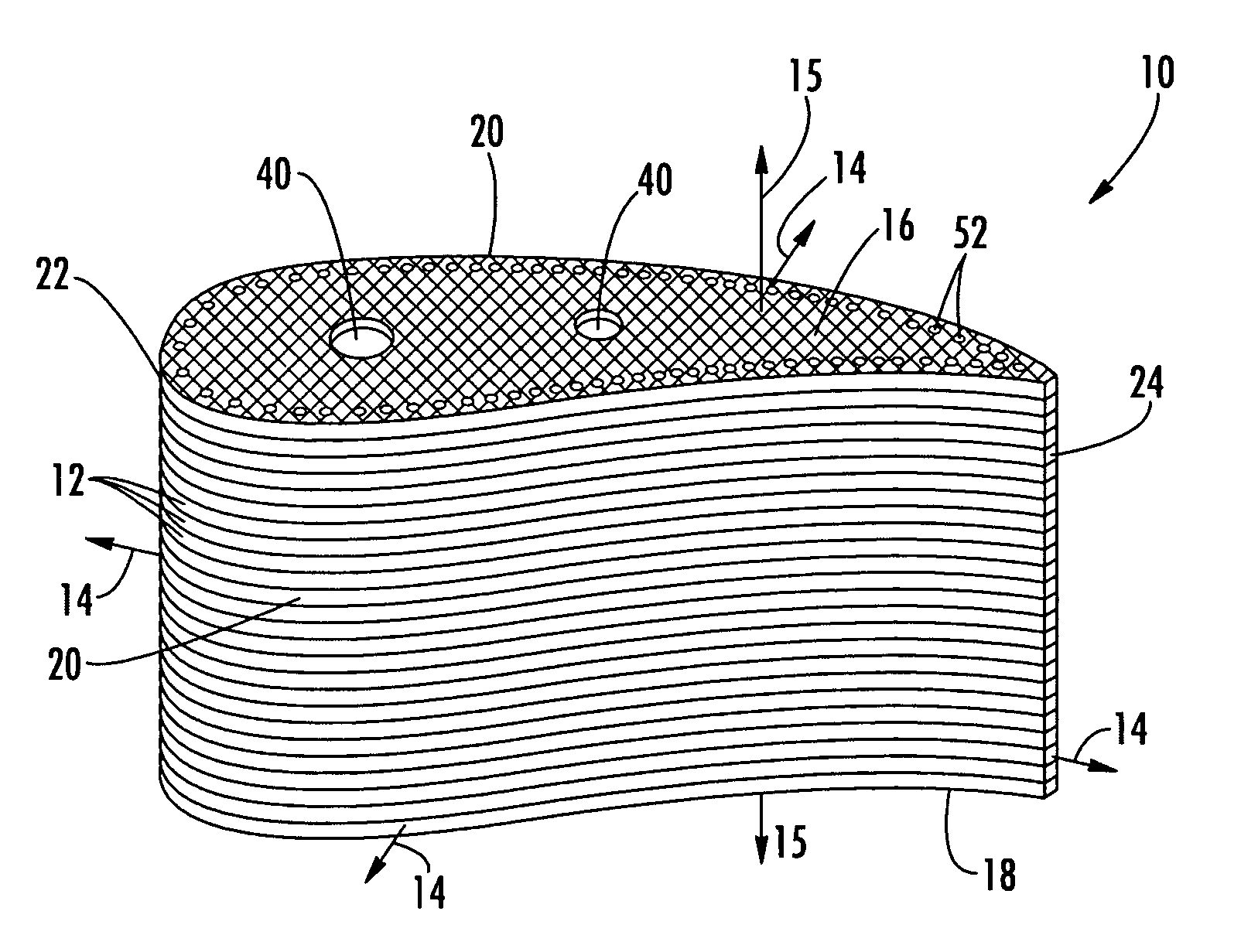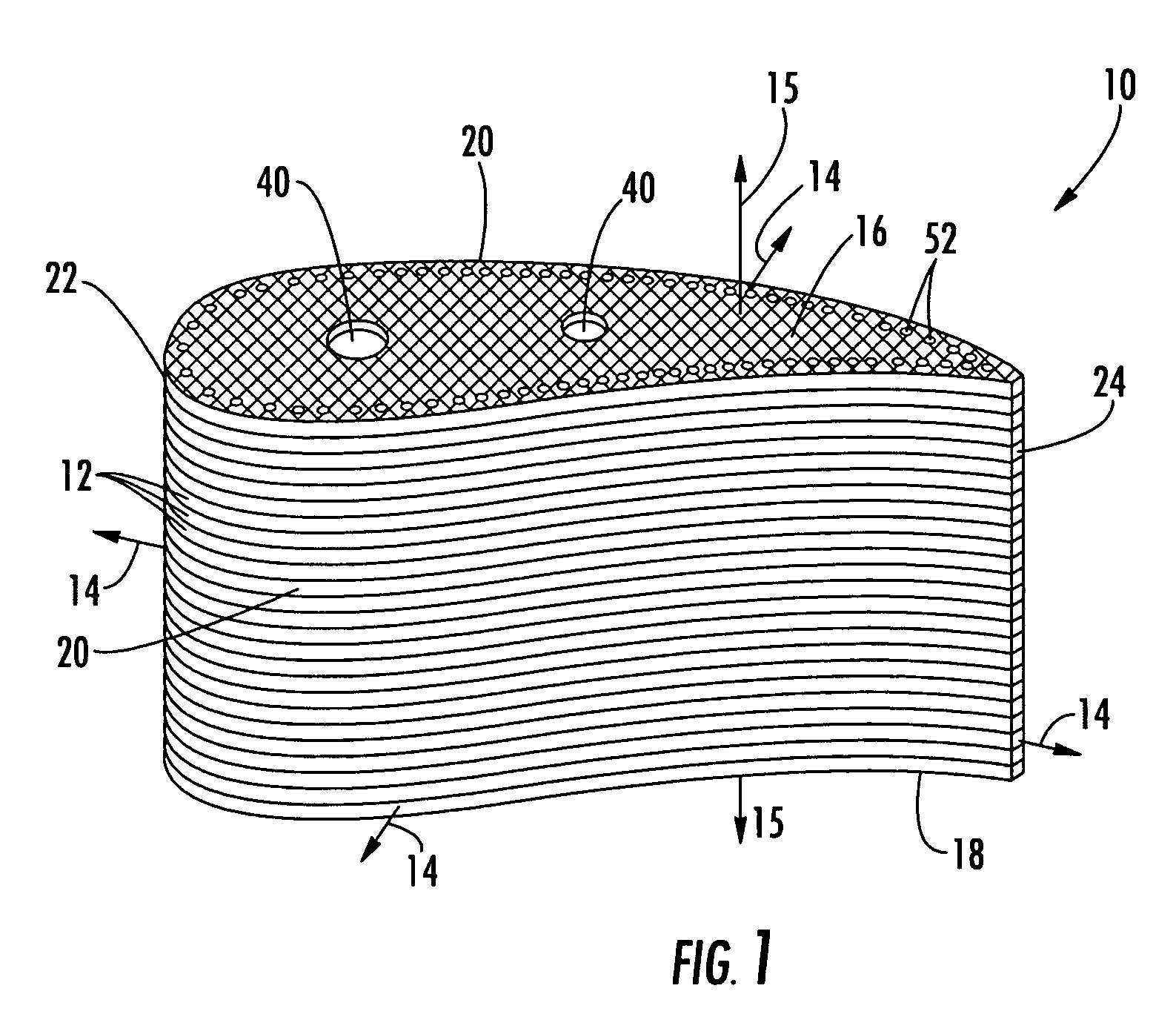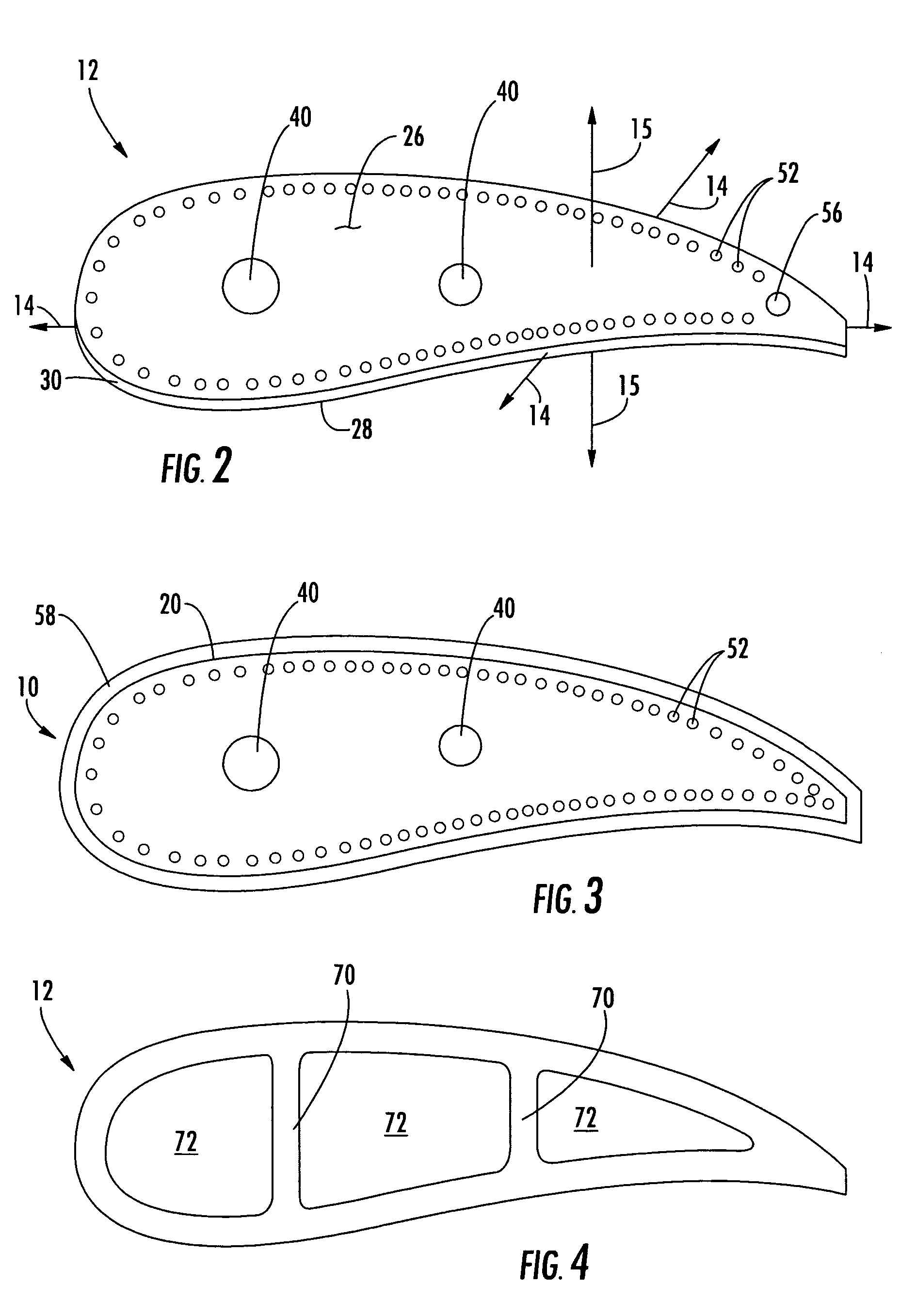Stacked laminate CMC turbine vane
a technology of turbine vane and laminate, which is applied in the direction of machines/engines, liquid fuel engines, natural mineral layered products, etc., can solve the problems of low interlaminar tensile and shear strength of cmc materials, preventing the viability of these concepts, and delamination of cmc materials, etc., to achieve enhanced cooling and structural features
- Summary
- Abstract
- Description
- Claims
- Application Information
AI Technical Summary
Benefits of technology
Problems solved by technology
Method used
Image
Examples
Embodiment Construction
[0038]Embodiments of the present invention address the shortcomings of earlier stacked laminate vane designs by providing a robust vane that makes use of the anisotropic strength orientations of ceramic matrix composite (CMC) materials such that the high stresses inherent in a cooled vane are aligned with the strongest material direction, while the stresses in the weakest material direction are minimized. Embodiments of the invention will be explained in the context of one possible turbine vane, but the detailed description is intended only as exemplary. Embodiments of the invention are shown in FIGS. 1–16, but the present invention is not limited to the illustrated structure or application.
[0039]FIG. 1 shows one possible construction of a turbine vane assembly 10 according to aspects of the invention. The vane 10 can be made of a plurality of CMC laminates 12. The vane 10 can have a radially outer end 16 and a radially inner end 18 and an outer peripheral surface 20. The term “radi...
PUM
| Property | Measurement | Unit |
|---|---|---|
| tensile strength | aaaaa | aaaaa |
| tensile strength | aaaaa | aaaaa |
| compressive strength | aaaaa | aaaaa |
Abstract
Description
Claims
Application Information
 Login to View More
Login to View More - R&D
- Intellectual Property
- Life Sciences
- Materials
- Tech Scout
- Unparalleled Data Quality
- Higher Quality Content
- 60% Fewer Hallucinations
Browse by: Latest US Patents, China's latest patents, Technical Efficacy Thesaurus, Application Domain, Technology Topic, Popular Technical Reports.
© 2025 PatSnap. All rights reserved.Legal|Privacy policy|Modern Slavery Act Transparency Statement|Sitemap|About US| Contact US: help@patsnap.com



